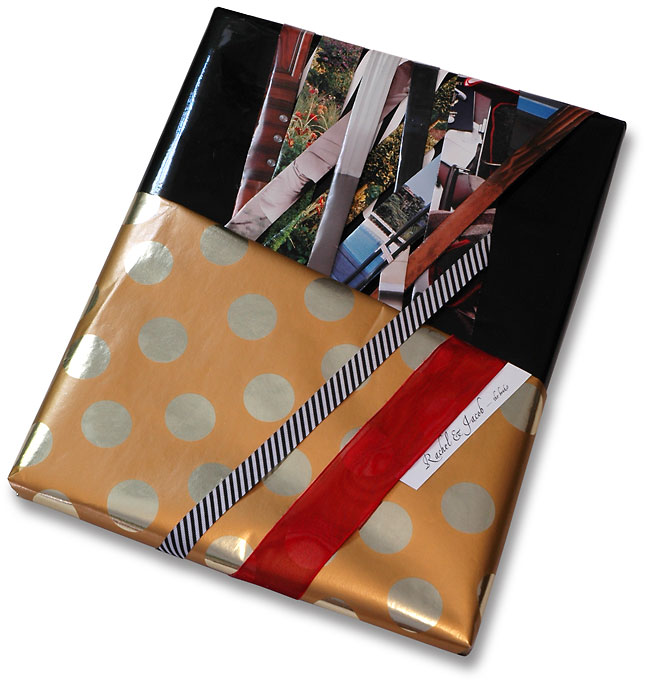
–
–
–
This is the second of Jacob and Rachel’s wraps. I began this wrap as a two-piece wrap. The gold-polka-dot paper had just arrived on a wrapped calendar. But it was to be the second layer of the two-piece technique. I chose the black shiny paper of shopping back as the foundation.
The bag had a white logotype printed on its sides. The vertical lines of its extremely condensed type suggested using the vertical lines of the band wrapping to cover up the logotype; if some of the white lines showed through they would become part of the band design.
First I made a temporary placement of the gold paper so I would know the angle of the edge where two pieces join. Then I wrapped the thick black paper onto the top half of the gift.
The bands went on next, thins strips with soft, puffy folds along their edges. I left plenty of black paper to the left and right of the bands, which were now looking like a kind of “bow” in the evolving composition. I placed and fixed the gold polka-dot paper. At this point the bands became more of a flower arrangement sitting in the vase of gold paper.
The basic wrap was in place but the wrap was still not complete. I experimented with various kinds of ribbon, placing them in sympathy with the angles of the wrap, but crossing on top of all the wrapping components. As I analyzed the way the dimensional bands tucked into and under the round folded edge of the gold paper, it seemed a good idea to make the ribbon both cross over the two-piece border and also tuck under the bands, ironically enhancing the illusionistic space of this flat design by real dimensional means.
I was getting close to completion. I had wanted some gauze ribbon in the system. I took a red piece and glued it so that it tucked into the two-piece border, and then ran down parallel to the black-and-white ribbon. I took one of my computer printed labels, cut it into a strip and placed in tuck-under style adjacent to the red gauze ribbon. Now the wrap was finished, a lively constructivist design with a very dimensional feel and plenty of reference to traditional wrapping’s luxury textures.
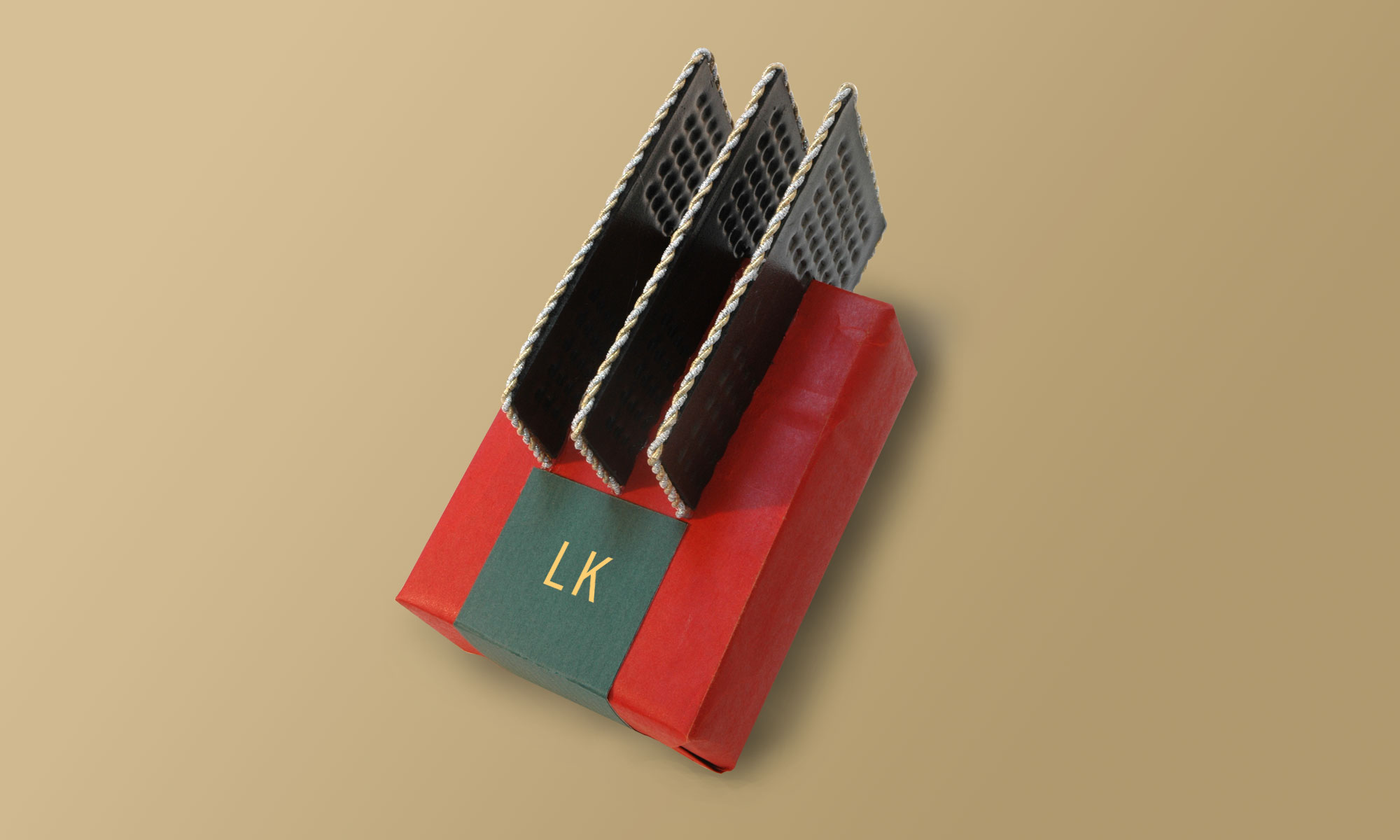
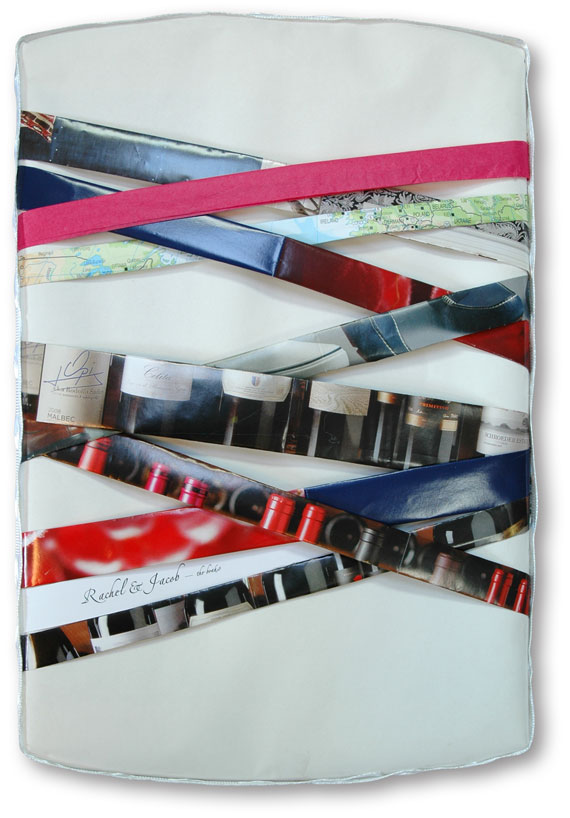
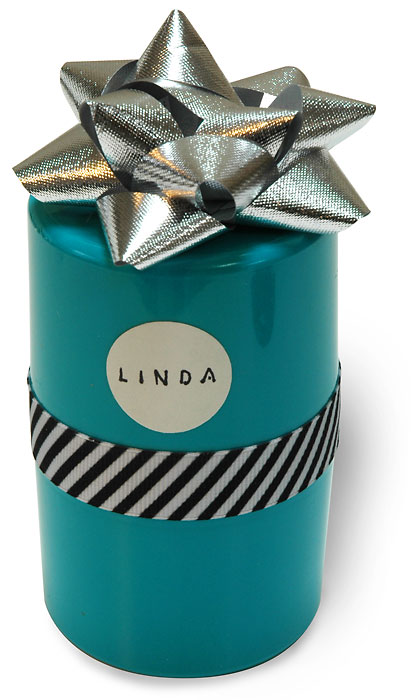
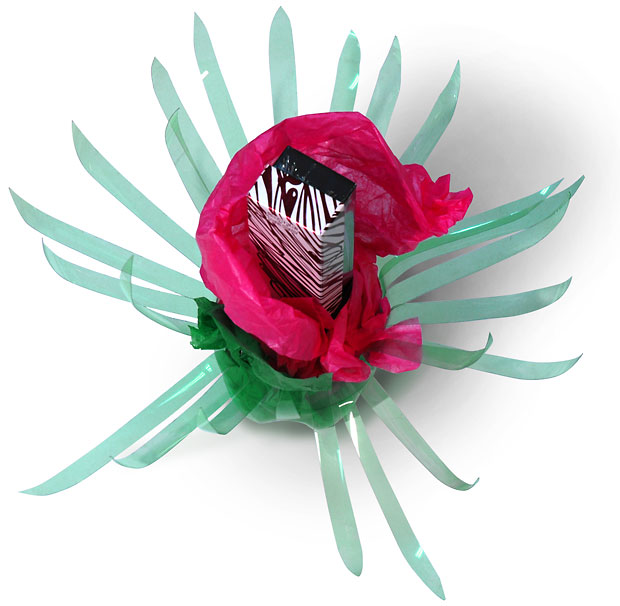 Today I made a birthday gift wrap for Linda using the poster-child material of the recycling craft world, the polyethylene terephthalate (PET) soft-drink bottle.
Today I made a birthday gift wrap for Linda using the poster-child material of the recycling craft world, the polyethylene terephthalate (PET) soft-drink bottle.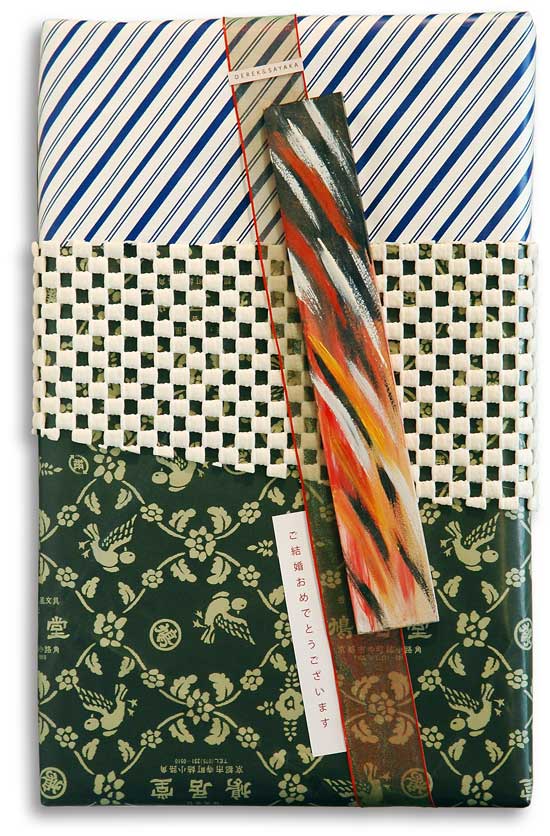 A young friend married a ballet dancer from Japan. To wrap our gift I reached for two scraps of paper that were very different. The light-colored piece with angled stripes is actually the back-side of fancy foil paper. The dark-colored piece is a small Japanese retail bag, cut open and laid flat.
A young friend married a ballet dancer from Japan. To wrap our gift I reached for two scraps of paper that were very different. The light-colored piece with angled stripes is actually the back-side of fancy foil paper. The dark-colored piece is a small Japanese retail bag, cut open and laid flat.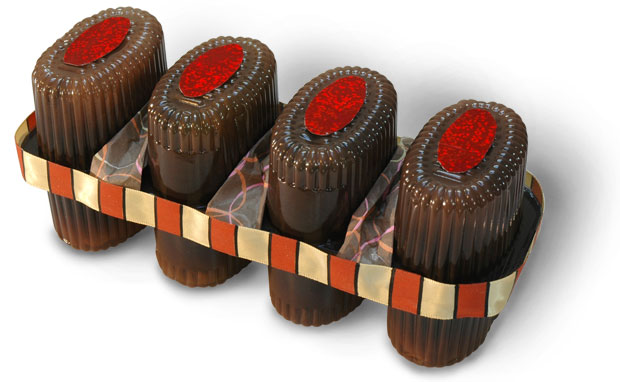 Continuing my fascination with the transient and expendable plastics of food packaging, I have been saving the flimsy molded materials found inside cookies, and candies. These translucent brown pieces from madelaine packages caught my eye because they look like tall cooking molds.
Continuing my fascination with the transient and expendable plastics of food packaging, I have been saving the flimsy molded materials found inside cookies, and candies. These translucent brown pieces from madelaine packages caught my eye because they look like tall cooking molds.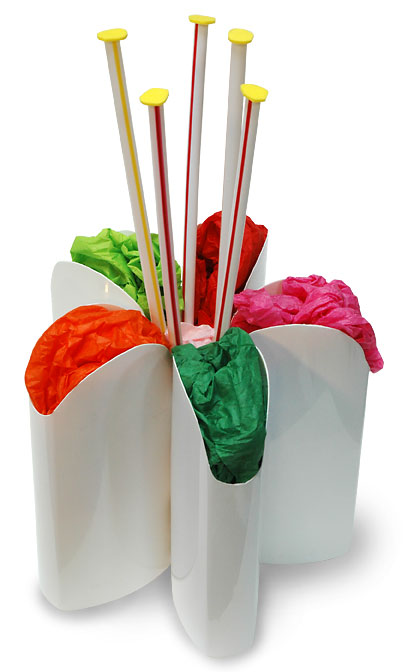 One day I peeled the labels off a plastic bottle that had held skin cream. I was impressed with the elegant form of this white object. I cut it in half and
One day I peeled the labels off a plastic bottle that had held skin cream. I was impressed with the elegant form of this white object. I cut it in half and  I’ve been thinking about this one since we brought home some bison ribs from The ( inimitable) Fort restaurant in March. It was a dinner honoring Chips Barry, and presented by Patty Limerick, two of the funniest people in the world. The sharp wit and the excellent meat joined forces in my mind, and when we got home with the night’s extra (not to say spare) ribs in wonderful black foam take-out boxes, I began to see a samurai wrap.
I’ve been thinking about this one since we brought home some bison ribs from The ( inimitable) Fort restaurant in March. It was a dinner honoring Chips Barry, and presented by Patty Limerick, two of the funniest people in the world. The sharp wit and the excellent meat joined forces in my mind, and when we got home with the night’s extra (not to say spare) ribs in wonderful black foam take-out boxes, I began to see a samurai wrap.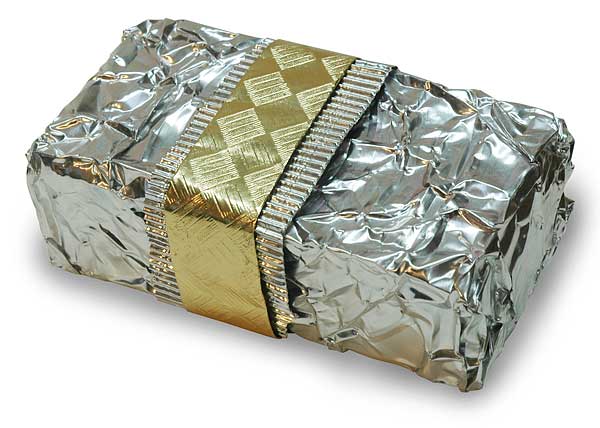
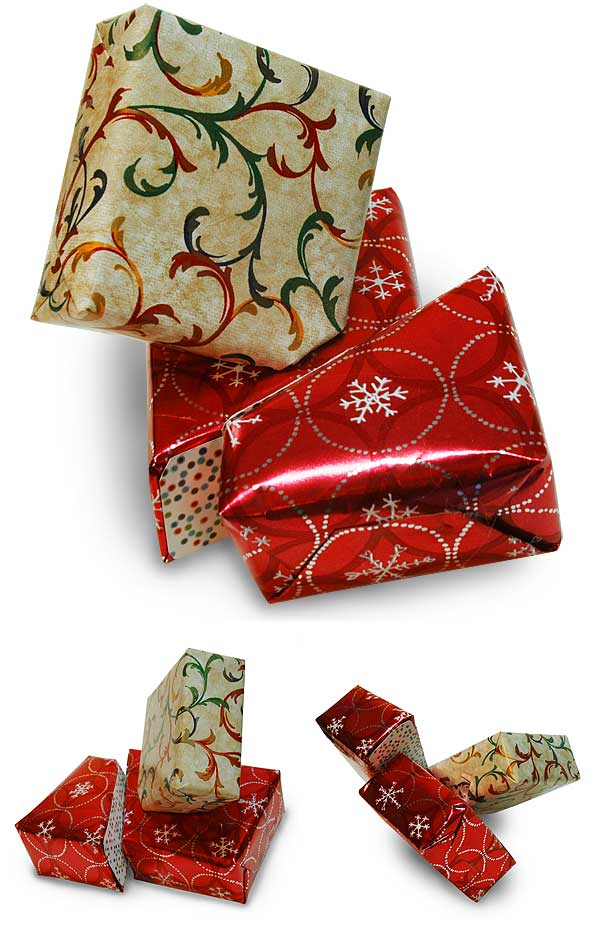 I have been thinking about multi-box wraps since I did the cow wrap at Christmas. In this case I was thinking about literal cubism. I wanted to see sliced and interpenetrating boxes.
I have been thinking about multi-box wraps since I did the cow wrap at Christmas. In this case I was thinking about literal cubism. I wanted to see sliced and interpenetrating boxes.